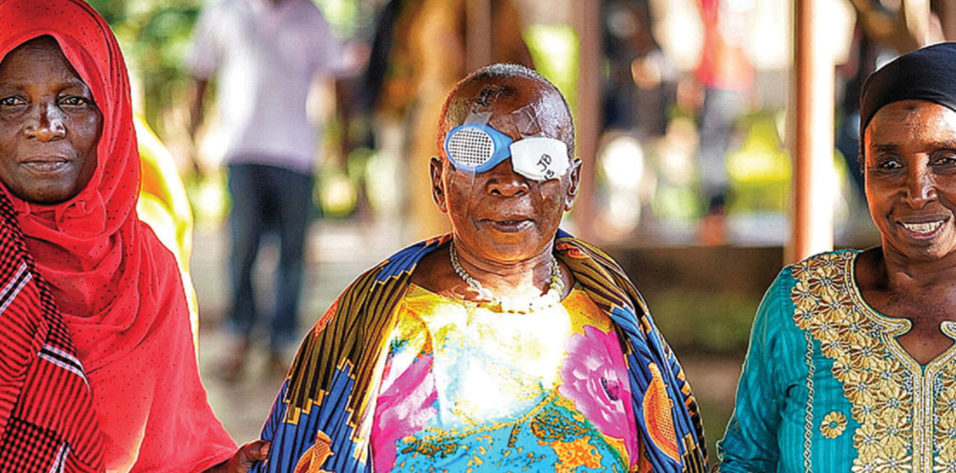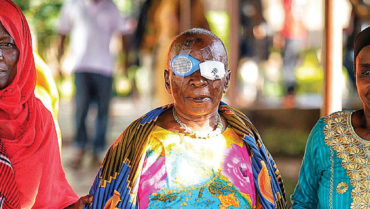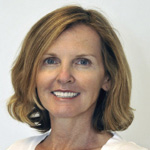
The prevalence of bilateral blindness in Tanzania is estimated to be between 2.4% and 4.7%. Cataracts account for more than 65% of blindness (526,000 individuals) and more than 75% of severe visual impairment in that country. Approximately 515,000 individuals have moderate to severe vision impairment from cataracts.1
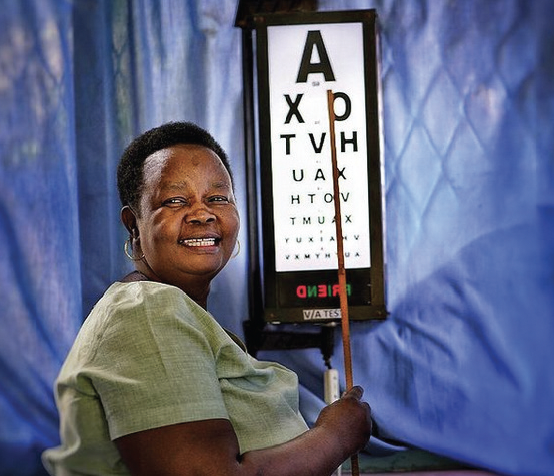
Figure 1. Sister Stella administering vision tests.
In the rural regions of Tanzania, much of the eye care is accomplished through surgical outreach. Alan S. Crandall, MD, founder of the Moran Outreach program, led several surgical outreach trips bringing quality eye care to remote regions. The concept of Eye Corps was sparked on one of these trips. Nurses and doctors, including myself, joined our Tanzanian colleagues in a one-room speakeasy with a tin roof and a dirt floor. We were exhausted from a long, successful surgical day. We huddled around a table in the light of a single candle and told stories, laughed, and lamented the difficulty of practicing ophthalmology in the region. We learned that many surgeons in Tanzania were assigned to clinics without microscopes, cataract trays, or slit lamps and had no senior surgeon for mentorship. These ophthalmologists were unable to operate without these resources, so we set out to help our colleagues and support the development of a sea change in ophthalmologic care in the country by providing equipment, surgical training, and mentorship.
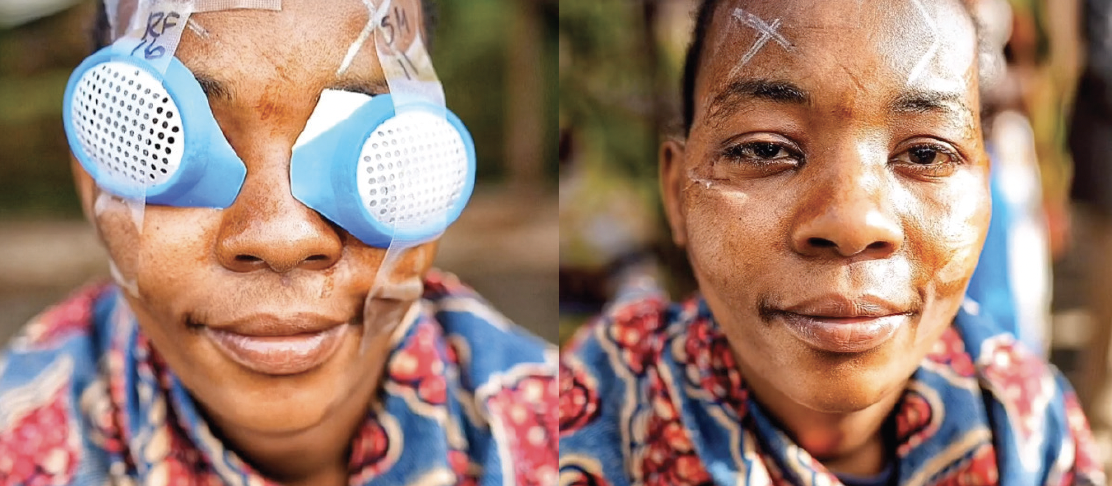
Figure 2. A young woman after bilateral cataract surgery.

Figure 3. Dr. MacDonald teaching Grace Temba (A) and Japhet Bright Boniface, MDRU, MMed, working independently with equipment loaned by Eye Corps (B).
FROM CONCEPT TO REALITY
Tanzania’s ophthalmologic training programs are knowledge-based. Surgical training is therefore minimal, and residents acquire skills as apprentices. The first 5 years after graduation are crucial to their development of surgical skills—not only to develop competence but to develop confidence, efficiency, and the skills to manage complex cases. The government places new residents in areas of need. With limited skills and no senior surgeon as a mentor, these graduates often struggle to perform quality surgery, and most stop operating. With a refresher course and adequate mentorship, however, they can maintain and advance their skills.
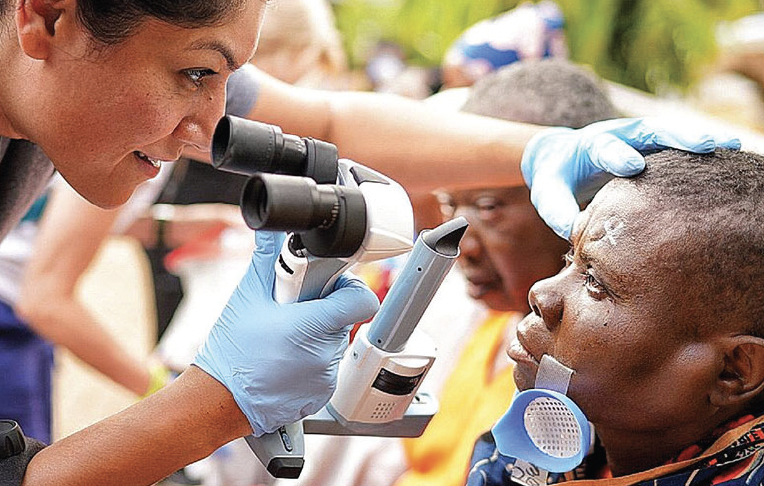
Figure 4. An Eye Corps doctor examining a patient after cataract surgery.
As we started understanding these issues, we crossed paths with two entrepreneurs, Jim Sowell and Steven E. Smathers, who decided to form a 501(c)(3) organization to tackle cataract blindness. Their idea was to empower surgeons to work efficiently and provide high-quality results. The model of this nonprofit organization augments current ophthalmologic training by filling postgraduate training gaps, using telementoring, and providing macro equipment loans. Thus, Eye Corps was created. The organization partners with the Moran Eye Center at the University of Utah in Salt Lake City; the Tilganga Institute of Ophthalmology in Nepal; the Tanzanian Ophthalmology Society; and the Muhimbili University of Health and Allied Sciences in Dar es Salaam, Tanzania.
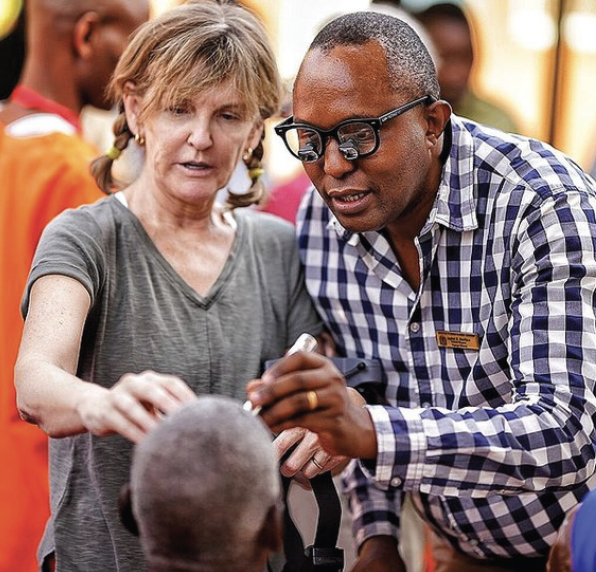
Figure 5. Drs. MacDonald and Boniface with a patient in Tanzania.

Figure 6. Dr. Boniface giving a patient instructions.
For the past 4 years, Eye Corps has been working with postgraduate surgeons in Tanzania. We provide access to equipment, identify gaps in surgical skills, and provide coaching to improve surgical quality and efficiency. These efforts have resulted in a 40% increase in cataract surgical volume and a 75% improvement in outcomes among those surgeons with whom we have worked. Our experience suggests that access to equipment and postresidency training can dramatically increase the quality and quantity of cataract surgery.
MUTUAL BENEFIT AND FUTURE DIRECTION
For me, working in a country with limited equipment and diagnostic tools has improved my clinical and surgical skills. It is also humbling to see how dependent I am on diagnostic equipment. I continue to be amazed by the wisdom and commitment of the doctors in Tanzania.
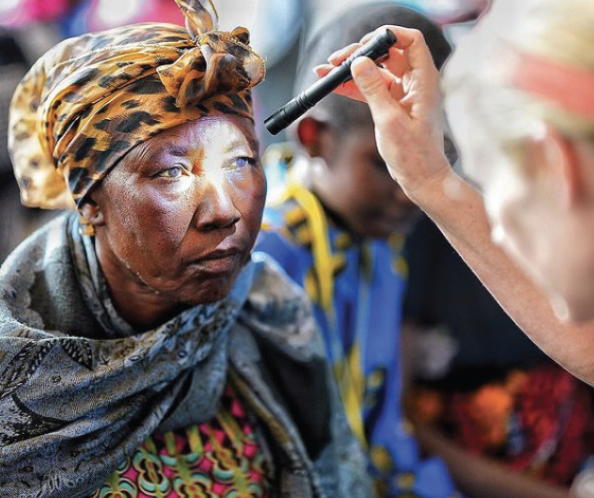
Figure 7. Nurse Lisa Williamson testing a patient’s pupils preoperatively.
It is an honor to work with the gifted team at Eye Corps, including Roger Furlong, MD; Jane Durcan, MD; and Lisa Williamson, along with the entirety of the incredible global outreach family (Figure at outset and Figures 1–8).
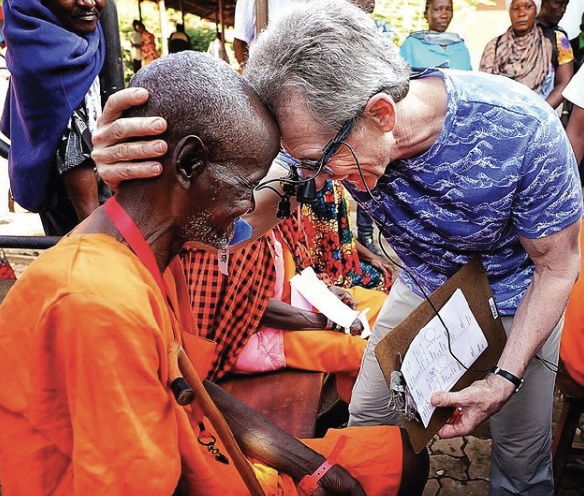
Figure 8. Dr. Furlong with a patient on postoperative day 1.
Figures courtesy of Michael Schoenfeld
The nonprofit has continued to function and grow during the COVID-19 pandemic, with the Tanzanian doctors taking the lead on outreach and training. Eye Corps is signing a memorandum of understanding with the Tanzanian Ministry of Health and is currently helping to develop a surgical training center where US surgeons can come teach residents and graduates in a wet lab setting.
1. Tanzania Government. Ministry of Health Community Development, Gender, Elderly, and Children National Eye Health Strategic Plan: 2018-2022.

